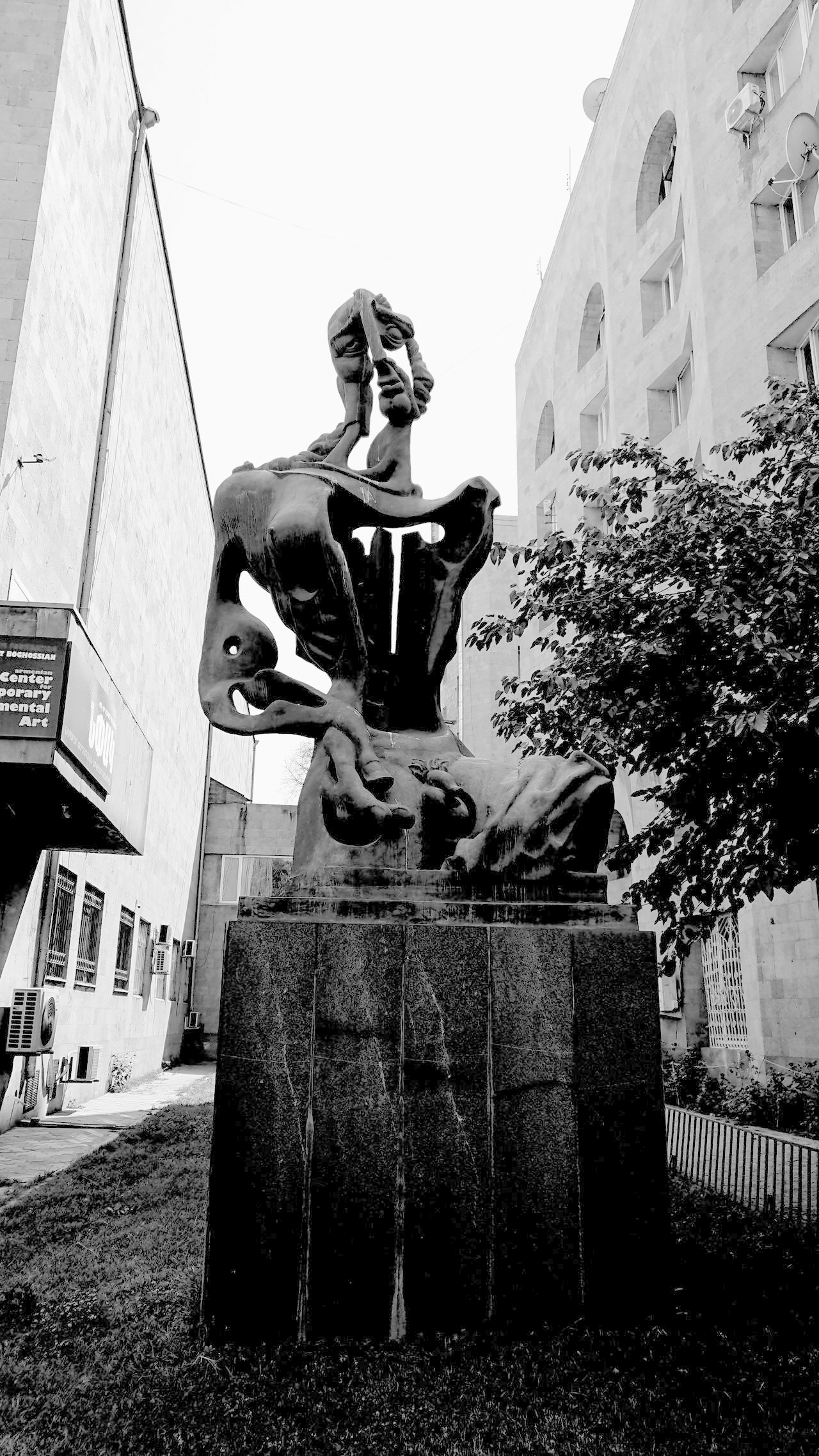The independent theater group Hangardz brought Saroyan’s play My Heart’s in the Highlands to life under the direction of Tara Demircioğlu and Yeğya Akgün, delivering a performance that deeply moved audiences and earned accolades. For nearly three seasons, it graced various stages in Istanbul. After the group’s tour in Armenia, the idea for the documentary emerged, revisiting themes explored in the play, such as belonging, roots, longing for home, and a sense of safety.
AYLİN VARTANYAN
We first heard William Saroyan’s reflections on the concept of home at the end of Lusin Dink’s film Saroyan’s Country, spoken in his own voice. Saroyan sought home in nature, in the climate, in the streets of the city, in tales, and in a conversation over tea. This search extended to the graves of those buried under the earth, the resonance of spoken language, and even to sorrow and smiles. On November 8, at the premiere of Tara Demircioğlu’s documentary Where Is Our Home?, we heard these words again, this time in Tara’s voice. The independent theater group Hangardz brought Saroyan’s play My Heart’s in the Highlands to life under the direction of Tara Demircioğlu and Yeğya Akgün, delivering a performance that deeply moved audiences and earned accolades. For nearly three seasons, it graced various stages in Istanbul. After the group’s tour in Armenia, the idea for the documentary emerged, revisiting themes explored in the play, such as belonging, roots, longing for home, and a sense of safety.
The documentary begins with breathtaking views of Armenia’s mountains, greenery, and cultural landmarks, gradually inviting viewers on a contemplative journey on what "home" means. Hangardz’s performance of My Heart is in the Highlands in Armenian, staged in Armenia, went beyond connecting with local audiences, fostering friendships both backstage and on stage. It also prompted Hangardz members to reflect on their identities and sense of belonging through the lens of place. The documentary delves into the idea of "home," a topic that became central during the group's visit to Armenia. Each member of Hangardz is individually asked: Where is home for you? As you might imagine, each response is unique, profound, and deeply meaningful. What stands out most is the group's choice to continue expressing their creativity across various artistic mediums. Every artistic endeavor involves the pursuit of beauty amidst challenges and the act of sharing and enlarging its impact. This process is akin to the gradual construction and care of a home—an intentional act of vitality.
Through My Heart is in the Highlands, Hangardz introduces us to a story from 1914 by Saroyan, a narrative of a poet searching for a home while far from it. In the play, we witnessed how a poet, having lost his home, language, and wife, prioritized enriching his child’s spirit over filling her pocket. It prompted us to reflect upon the following question: “Can the silent presence of a grandmother, a bearer of the Armenian language and identity, touch the imagination and hopes of her grandchild?” The mountains were portrayed both as a literal and metaphorical backdrop, symbolizing the narrator's homeland and serving as a profound source of cultural memory. Through Saroyan's work, we explored how the pain of exile and distance from one's roots can be processed. The documentary born from these theatrical performances continues to sincerely examine the concepts of roots, home, and belonging, extending the narrative of the play into a deeper exploration.

A few days after watching the documentary, I visited Yerevan. Once again, I encountered Yervand Kochar's magnificent sculpture Melancholy displayed right at the entrance of NPAK (the Armenian Center for Contemporary Experimental Art). Inside the museum’s exhibition space, there was a short film and archival documents detailing the sculpture's various stages and installations. Created by the artist in 1957 and later cast in bronze at a larger scale in 2003, the sculpture is often interpreted as a profound exploration of human suffering and existential despair. The piece features fragmented male and female forms entwined in a spiral, symbolizing poison or oppression, with an emptiness where the heart should be. This void is filled with towering apartment buildings in its center. The powerful imagery reflects identity, loss, and the disconnection of modern life, drawing attention to Kochar’s avant-garde vision. In this sculpture, the boundaries between the internal and external are blurred. A large hand extends outward but remains restricted in its movement due to missing muscle and bone structure, evoking a sense of limitation and fragility.
According to Walter Benjamin, melancholy is often associated with incompleteness or ruins; it reflects the impossibility of fully healing from historical loss. Kochar’s sculpture also depicts an incomplete human form, with the spirals around the necks of the fragmented figures evoking a sense of blockage. The void where the heart should be, filled with urban structures, reminds us of how the personal and societal traumas that arise in the wake of losses alienate us further from our own bodies as we attempt to fill that emptiness. As the Hangardz theater troupe’s search for “home” through Saroyan’s work transforms into a documentary, the voids and formlessness in Kochar’s sculpture resonate with the fragmented and inconsistent representation of home seen in their film. This demonstrates that home cannot be encapsulated by a single definition or cohesive form. While the artistic power of works like Kochar’s engages us with the formlessness that estranges us from the image of home we pursue, it also invites reflection. Listening to Hangardz’s sincere exploration of home, shaped over two years by Saroyan’s words and imagery, reminds us that we are not alone in this search.

